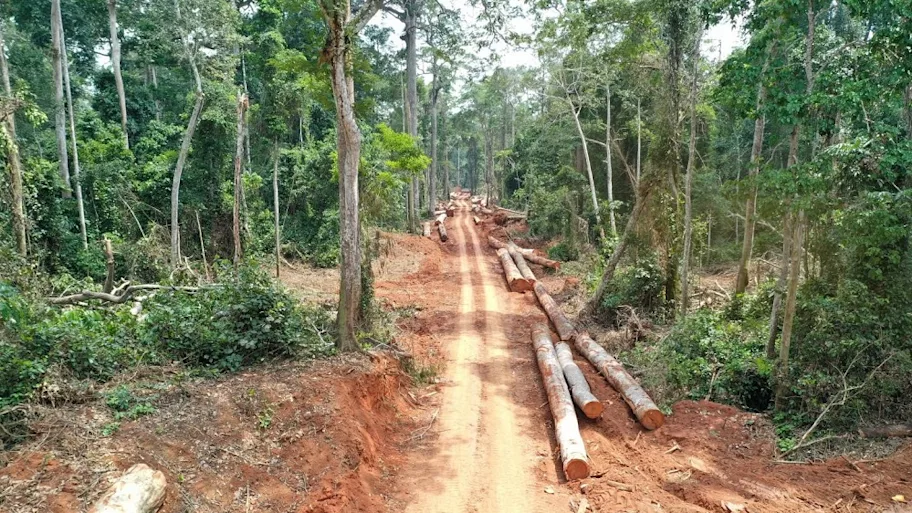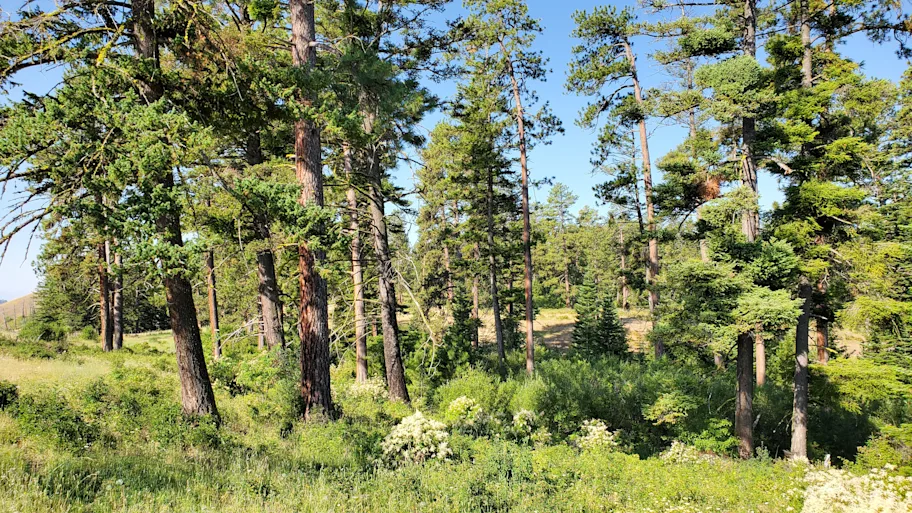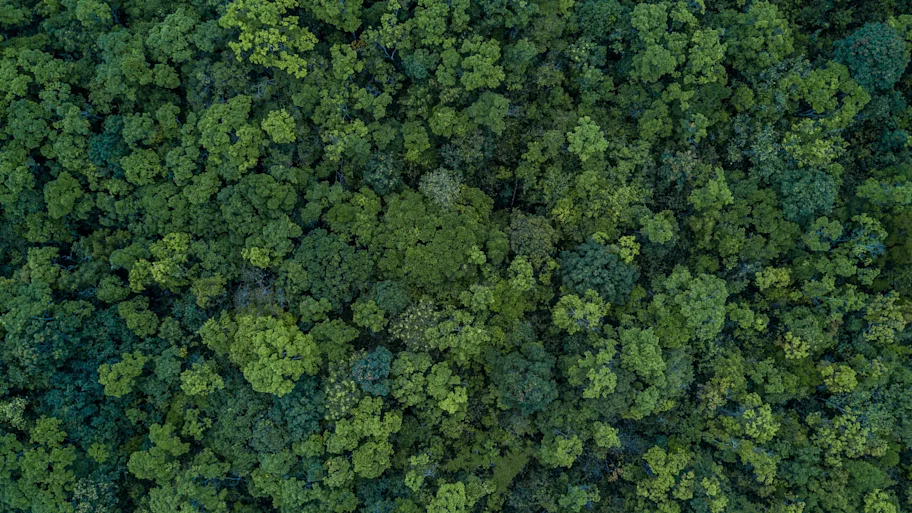
- Science news
- Environment
- Growing existing forests essential in mitigating global crises
Growing existing forests essential in mitigating global crises

Proforestation consists of growing existing natural forests, as opposed to planting trees or forests where there is none. Image: Shutterstock.
“Proforestation” has significant potential in the United States
— by Tufts University
Based on the latest evidence from around the world, scientists singled out “proforestation” – growing existing natural forests – as key to addressing the accelerating crises in climate and biodiversity. In many areas proforestation is a more rapid, powerful and practical option for sequestering carbon than afforestation – planting trees, or reforestation – replacing logged forests. Their report was published in Frontiers in Forests and Global Change as part of a special research issue on “Intact Forests.”
Increased carbon sequestration by forests is required to increase negative emissions and stabilize CO2 levels – an urgent goal to protect biodiversity and avert catastrophic tipping points. Recently global restoration of trees has been identified as the most powerful tool available to reduce emissions. Protecting forests is also the most effective means for protecting the greatest land-based biodiversity.
Intact Forests in the United States: Proforestation Mitigates Climate Change and Serves the Greatest Good► Read original article► Download original article (pdf)
The IPCC special report released on August 8, 2019 focused on preventing deforestation and afforestation but did not specify proforestation as a critical strategy. Co-author Prof. William R. Moomaw, climate scientist and lead author on multiple previous IPCC reports, noted that growing existing forests has been overlooked and underutilized, particularly in the United States. “Based on emerging science it is time to focus squarely on maximizing the potential of the forests we already have. No other strategy is as effective immediately and in the coming decades when we need it most. Forests can mitigate the climate crisis significantly and protect many species from extinction if we allow them to function as they have been doing for millions of years.”
Moomaw founded and directed the Center for international Environment and Resource Policy and currently serves as Co-Director of the Global Development and Environment institute at Tufts University. He is also the board chair of the Woods Hole Research Center and The North American board of The Climate Group. In the report New England is showcased as a forested region with significant potential for proforestation – carbon-dense temperate forests with sequestration rates that can accelerate for many decades. Only about 2% of New England overall is protected legally as a nature preserve, i.e. similar to a National Park, a Wilderness area, or the constitutional “Forever Wild” clause protecting the Adirondacks. The majority of heavily populated Southern New England (Connecticut, Massachusetts and Rhode Island) is forested but only about 1% of the land base is protected. Regional groups working to increase this percentage include the Northeast Wilderness Trust and the Wildlands and Woodlands initiative.
A current bill in the Massachusetts legislature, House Bill 897 – “An Act for Forest Protection” – would update outdated laws and make Massachusetts a national leader prioritizing proforestation on public land. Over 70% of Massachusetts forestland is owned privately, and H. 897 would designate stateowned natural land as “reserves” or “parks” – no longer managed for commercial timber, with all current uses grandfathered in and interventions allowed as needed. These public lands add up to about 13% of the state, and similar to the documented local and regional benefits of National Parks, H. 897 is expected to increase tourism and recreation and provide a variety of economic opportunities – including new forestry jobs in monitoring and natural stewardship.
Related: Floodplain forests under threat
Senior Ecologist and coauthor Edward K. Faison at Highstead Foundation, an affiliate of Harvard Forest, emphasized important structural and habitat features that develop in forests over time. Faison noted that in addition to storing higher amounts of carbon, natural “wildland” forests tend to have more complex structures – i.e. greater numbers of dead standing trees, large pieces of downed wood, large living trees and greater tree species richness than managed forests – all of which can increase the diversity and abundance of many types of organisms.
Over time, Faison noted, “older unmanaged stands naturally develop large openings from storms, insect outbreaks and the natural decline of large trees, providing additional habitat for a range of species that utilize forests openings and wooded areas with reduced tree cover.” The report cites numerous studies that natural “unmanaged” forests in the United States have higher carbon storage and sequestration, fewer invasives, lower burn intensity, and a greater diversity of many types of organisms. The authors emphasize that even just considering carbon it’s not just the trees. “A lot more carbon than we thought is stored in and continues to accumulate in soil and wetlands – storing it takes a long time, but disturbing it releases it immediately. Intact forests and wetlands are also our best protection from flooding – a problem that is only going to get much worse in our changing climate.” Moomaw noted. A complementary recent report has identified “stable forests” – natural forests that are not already disturbed significantly – as particularly important to protect as carbon sinks and the many species that these forests hold.
Despite the urgency, Moomaw recommends a targeted approach. “Of course, we need wood and other forest-based resources, and some private forests can be doing just that. But purposefully growing a greater number of natural forests to maximize carbon sequestration is a priority that maximizes many other ecosystem services.”
For resource production Moomaw and co-authors promote policies that support longer harvest rotations, higher value/longer lasting products and a bigger focus on local wood reuse and recycling. Only a small portion of carbon lost from the forest becomes a lasting wood product, and forest manipulations such as clear-cutting, patch cutting, salvage logging and other approaches can make the land a carbon emitter, potentially for decades. “We need to prioritize proforestation on public land, but we also need to reduce demand and provide education and economic incentives so private landowners let more of their forests continue growing.” Removing subsidies for large scale use of wood from forests to fuel heating systems and electric powerplants will also reduce pressure on forests.
Co-author Susan A. Masino, the Vernon Roosa Professor of Applied Science at Trinity College and currently a Charles Bullard Fellow at Harvard Forest, notes that forests support public health and especially brain health. They are also a rich source of new medicines. “Public land must be dedicated to the public good. Aside from the climate crisis, as we become more urbanized natural forests will become even more valuable for respite, recreation, science and many physiological benefits. We need to immediately reassess policies and leverage interdisciplinary science without any conflicts of interest. We all know we need to “first do no harm” to protect our own health., and we immediately need to apply a similar precautionary principle and protection to the natural world wherever possible. All around us we are still discovering new species and new opportunities.”
Original article: Intact Forests in the United States: Proforestation Mitigates Climate Change and Serves the Greatest Good
REPUBLISHING GUIDELINES: Open access and sharing research is part of Frontiers’ mission. Unless otherwise noted, you can republish articles posted in the Frontiers news blog — as long as you include a link back to the original research. Selling the articles is not allowed.






